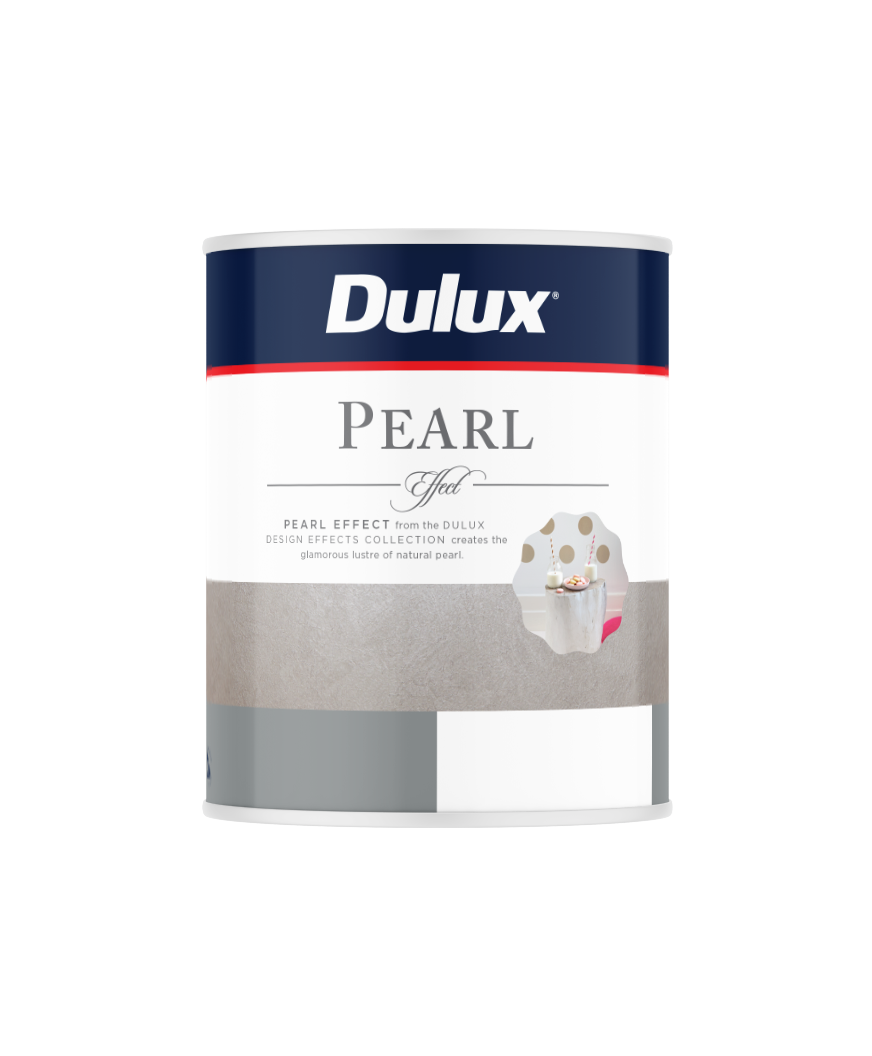Design Pearl Effect

About Design Pearl Effect
Add a touch of luxury to your home on feature walls and accessories with the glamorous lustre of natural pearl though Dulux Pearl Effect from the Dulux Design Effects Collection.
Downloads
Application
At a glance
- Water-based
- Water wash-up
- Available tints: Gardenia Frost
- Available in 1L
- Apply with brush or effects roller
Areas to use
Performance guide
Dulux Pearl Effect is suitable for interior use on walls, doors, trim or furniture.
Surfaces
• Paper-faced plasterboard
• Cement sheet
• Brick
Previously Painted Surfaces
• Dulux Pearl Effect can be applied over previously painted surfaces that are in good condition.
• For optimum appearance a perfectly smooth surface free of defects is required.
• Differences in surface gloss or variations in surface porosity can result in uneven colour and patchy appearance.
Previously painted surfaces in good condition:
Dust, then clean with Selleys® Sugar Soap.
Previously painted surfaces with cracks or holes repaired with filler:
Spot prime repairs with Dulux Prepcoat Acrylic Sealer Undercoat.
Glossy surfaces:
Lightly sand to a dull finish.
Unpainted Surfaces
Unpainted plasterboard, brick, cement sheet, bare timber:
Apply one coat of Dulux Acrylic Sealer Undercoat.
Unpainted set plaster, fibrous plaster, plasterglass:
Apply one coat of Dulux PRECISION® Sealer Binder.
Unpainted metal surfaces:
Thoroughly degrease and apply Dulux PRECISION® All Metal Primer.
Brush, roller
• To ensure evenness of colour, pour all cans of Dulux Pearl Effect into a clean dry container.
• Stir thoroughly prior to use to ensure even distribution of effect particles.
• Before you begin, test your chosen application method on a large piece of board.
• Mask off adjacent walls, skirting boards and cornices.
• Brush Dulux Pearl Effect around the edges of the wall.
• Apply the first coat with a medium nap roller.
• Roll using light, even pressure (strong pressure can create lines on the wall).
• Take the roller as close to the edge as possible to cover the brush marks.
• Working in small sections, approx 1m x 1m, apply the second coat with a roller.
• While the paint is still wet, drag the brush in a random pattern.
• Make sure to overlap brushed areas to achieve an even effect.
• Avoid touching up.
• Rolling alone is not recommended.
Unused paint
Do not pour leftover paint down the drain.
Unwanted paint should be brushed out on newspaper and allowed to dry, and then disposed of via domestic waste collections.
For more information on responsible disposal of paint and packaging visit paintback.com.au or painttakeback.co.nz
For more information visit painttakeback.co.nz
Empty paint containers
Leave empty paint containers open in a well-ventilated area to dry out. When dry, recycle the container via steel can recycling programs.
Disposal of empty paint containers via domestic recycling programs may differ between local authorities. Check with your local council first.
Do not reuse container unless thoroughly decontaminated.
For more information on responsible disposal of paint and packaging visit paintback.com.au or painttakeback.co.nz
Make confident decisions about your project needs with support from our wide network of colour and product specialists, tools, programs and apps — or chat to one of our expert consultants now.

Imagining how a space will feel in a new colour scheme is hard. Save time and gain colour confidence the smart way with personal guidance from an expert Dulux Colour Consultant.
Learn more-->Have you got the vision but need some help with application? Connect with the right local painter to suit your needs.
Find a painter-->
